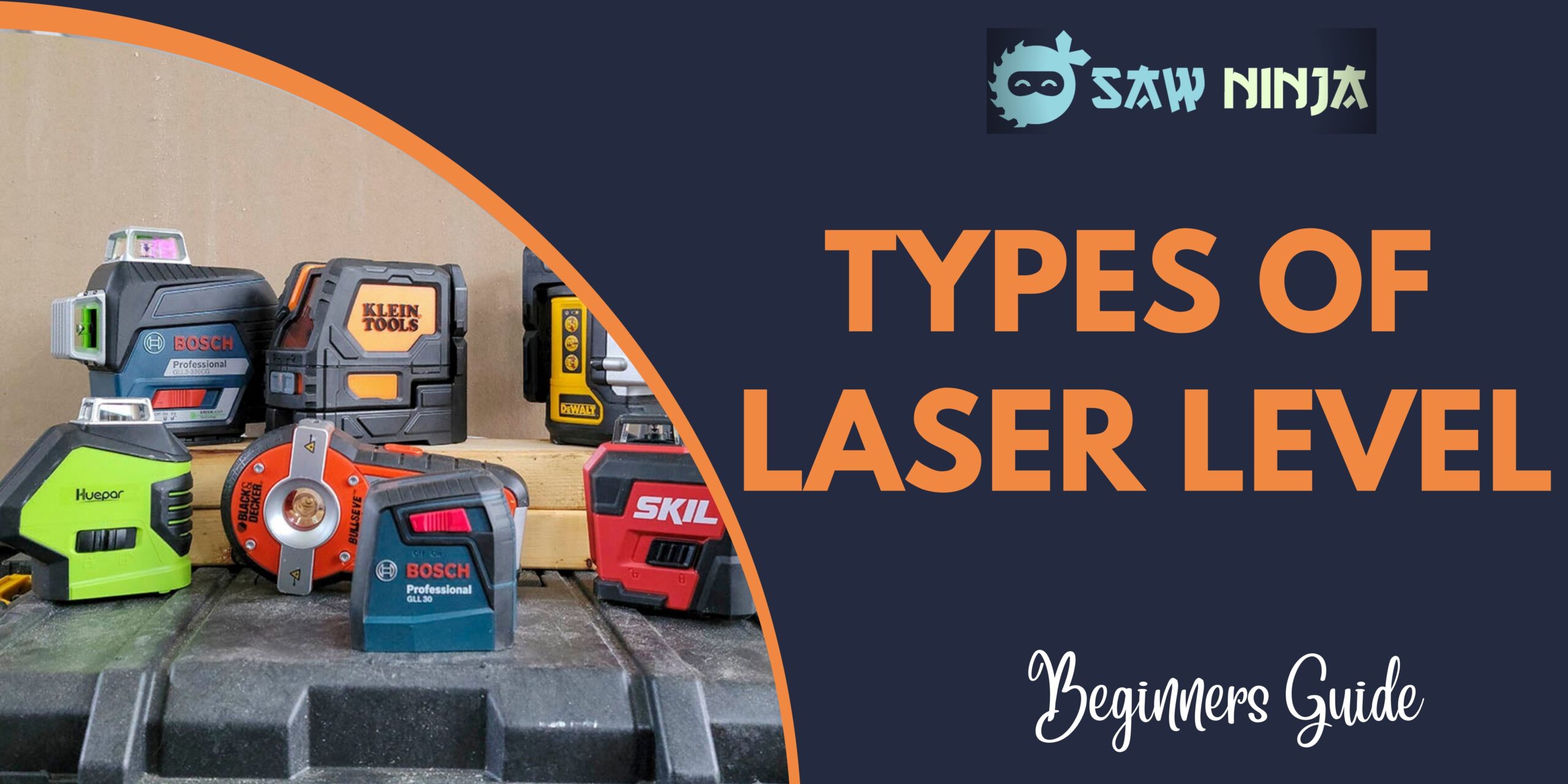There are many different types of laser levels on the market today. But what is a laser level and what are its uses? A laser level is a device that emits a single plane of light using a laser diode. This light can be projected onto surfaces to create perfectly straight lines or used as a guide to Level objects.
>>>> Do Laser Levels Measure Distance?
There are many different types of laser levels, from simple handheld models to sophisticated tools that can be mounted on construction equipment. Here we will explore the different types of laser levels and their applications.
Let’s Get Started!
Types of Laser Level
Depending on the job or project you are undertaking, you might need a different type of laser level. Here is a quick guide to the three main types to help you choose the right one.
- Dot laser levels
- Line laser levels
- Rotary laser levels
Dot laser levels
Dot laser levels are the simplest and most affordable type of laser level. The project is a single dot of light, which can be used as a reference point for hanging pictures or shelves, or for aligning other objects.
Pros
- Inexpensive
- Simple to use
- Compact and portable
- Can be used in a variety of ways
- Versatile
Cons
- Only projects a single dot of light
- Not as accurate as other types of laser level
- Limited uses
Line laser levels
Line laser levels project a horizontal or vertical line of light, which can be used as a reference point for tiling, painting, or other jobs that require a straight line. Some line laser levels can also project both horizontal and vertical lines at the same time.
Pros
- More accurate than dot laser levels
- Can project both horizontal and vertical lines
- Can be used for a variety of jobs
- Easy to use
- Affordable
Cons
- Not as versatile as rotary laser levels
- Limited uses
- Can be difficult to see in bright light
Rotary laser levels
Rotary laser levels are the most expensive and sophisticated type of laser level. They project a horizontal or vertical line of light that rotates 360 degrees, creating a continuous reference point for larger jobs such as leveling a foundation or aligning a drainage system
>>>> Best Laser Level for Cabinets
Pros
- Continuous reference point
- Ideal for large leveling jobs
- More expensive than other types of laser levels
- More accurate than a dot and line laser levels
- Can be used for a variety of jobs
- 360-degree rotation
Cons
- Not as versatile as dot and line laser levels
- Can be difficult to see in bright light
- Limited uses
FAQs
What type of laser level is best?
The best type of laser level for your needs depends on the job or project you are undertaking. If you need a simple reference point, a dot laser level is a good choice. For jobs that require a straight line, such as tiling or painting, a line laser level is a better choice. And for large jobs that require a continuous reference point, a rotary laser level is the best option.
What are the three most common laser level types?
The three most common types of laser levels are dot, line, and rotary. Each has its advantages and disadvantages, so it’s important to choose the right one for your needs.
What is a 3-point laser level used for?
A 3-point laser level is used to project a horizontal or vertical line of light that rotates 360 degrees. This creates a continuous reference point, making it ideal for large leveling jobs. It is also more expensive than other types of laser levels.
What is a 5-point laser level?
A 5-point laser level is a rotary laser level that projects five beams of light instead of just one. This makes it more accurate than a single-beam rotary laser level and is ideal for large jobs that require a high degree of accuracy. However, it is also more expensive.
What is a 5-point laser good for?
A 5-point laser level is a rotary laser level that projects five beams of light instead of just one. This makes it more accurate than a single-beam rotary laser level and is ideal for large jobs that require a high degree of accuracy. However, it is also more expensive.
Conclusion
Laser levels are a handy tool for anyone working with construction or renovation projects. In this post, we’ve outlined the different types of laser levels and shared a step-by-step guide on how to use them.
We’ve also answered some frequently asked questions about laser levels so that you can be sure to get the most out of your purchase. Have you tried using a laser level in your next project? Let us know how it goes!
